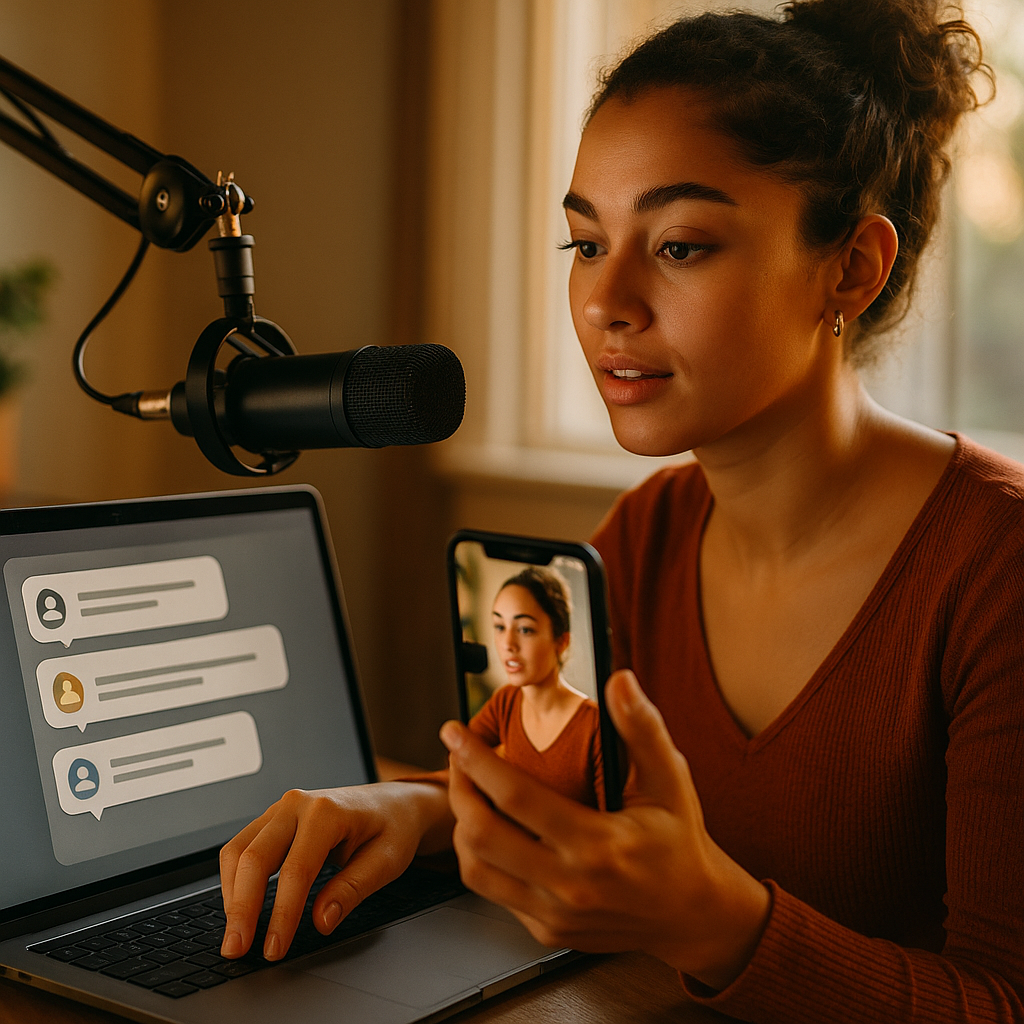Want to know how to use influencers to gather customer feedback and product insights? With social media’s continued evolution in 2025, influencers provide authentic connections to your target audience. Leveraging their voices goes beyond brand awareness—they unlock honest opinions and untapped product ideas. Ready to turn influencer partnerships into a feedback engine?
Why Influencers Matter for Customer Feedback
Influencer marketing has become a key strategy for brands eager to understand their customers on a deeper level. By collaborating with trusted creators in your niche, you access audiences organically, collecting genuine reactions in real time. Recent Statista research shows that over 68% of consumers trust influencer reviews as much as personal recommendations. This trust translates to actionable product insights that traditional surveys may miss.
Influencers interact daily with engaged communities, offering brands the opportunity to:
- Reach diverse demographics quickly
- Receive unfiltered, authentic feedback
- Identify emerging trends and preferences
- Spot recurring concerns and wish-list features
By recognizing these advantages, companies position themselves to innovate based directly on customer voices—driving loyalty and growth.
Choosing the Right Influencers for Product Insights
Not every influencer will be the right fit for product research. Focus on creators who align with your brand’s values, audience demographics, and product category. Look beyond follower counts—micro and nano-influencers (with 1,000 to 50,000 followers) often foster closer community ties, resulting in higher engagement rates.
When evaluating influencers, prioritize:
- Niche relevance: Are their followers your target customers?
- Authenticity: Do they have genuine connections and honest interactions?
- Engagement rate: Is their audience active and responsive?
- Past partnerships: Have they worked with similar brands or products?
Building partnerships rooted in mutual respect ensures the feedback gathered is credible and valuable. Consider offering influencers creative freedom, so their audience receives unfiltered opinions.
Best Practices: Collaborating with Influencers for Feedback
To truly harness the power of influencers for customer feedback and product insights, go beyond simple sponsored posts. Structure collaborations to foster two-way communication and encourage candid responses. In 2025, transparency and interactive formats are essential.
- Involve Influencers Early: Invite them to test prototypes or participate in product development from the beginning.
- Host Q&A Sessions: Let influencers collect questions and feedback from their followers, sharing insights directly with your team.
- Run Polls and Surveys: Use Instagram Stories, TikTok polls, and YouTube community tabs for fast, focused data points.
- Request Honest Reviews: Encourage detailed, constructive feedback—positive and negative—via posts, reels, and stories.
- Leverage UGC (User-Generated Content): Compile and analyze product testimonials shared by influencers and their fans.
Always disclose partnerships, per advertising regulations, to maintain trust.
Turning Influencer Insights into Actionable Improvements
Gathering data is only half the equation—transforming influencer-driven feedback into meaningful change sets leading brands apart. Use structured systems to categorize, prioritize, and address feedback fast. Techniques proven effective in 2025 include:
- Sentiment Analysis: Use AI tools to analyze influencer content and audience comments for recurring themes and emotional nuance.
- Feedback Loops: Share how customer input influences beta updates and new features in real time, keeping both influencers and their followers in the loop.
- Internal Collaboration: Distribute insights across teams—from product to marketing—to encourage swift action and innovation.
Involving influencers and their communities in product iterations creates a sense of ownership, leading to advocacy and organic growth. Communicate openly about what’s changing, strengthening long-term relationships.
Measuring Success: KPIs for Influencer-Driven Feedback Campaigns
To evaluate your efforts, define key performance indicators (KPIs) before launch. In 2025, successful brands look beyond vanity metrics, prioritizing depth and relevance of insights:
- Volume and Quality of Feedback: Are you receiving actionable suggestions, not just likes and shares?
- Time to Implement Changes: How quickly does user feedback lead to visible improvements?
- Audience Sentiment Shifts: Is brand perception improving after acting on influencer insights?
- Repeat Engagement: Do influencers and their audiences remain willing to participate in future product discussions?
Regularly report findings to stakeholders and influencers to encourage continued engagement and transparency. Adopting this data-driven approach proves the tangible value of influencer partnerships.
Mitigating Risks: Navigating Authenticity and Brand Safety
While influencer collaborations offer tremendous upside, they also come with challenges such as authenticity questions or off-brand messaging. Protect brand reputation by implementing:
- Clear Guidelines: Provide campaign briefs but allow creative flexibility.
- Compliance Checks: Ensure all content meets legal requirements, including disclosures and honest representations.
- Ongoing Monitoring: Use social listening tools to track real-time responses, identifying issues early.
Addressing concerns swiftly and transparently reinforces brand integrity and sustains trust with both influencers and consumers.
In summary, learning how to use influencers to gather customer feedback and product insights empowers brands to innovate directly from their communities. Collaborate intelligently, listen actively, and act decisively for sustainable success in 2025 and beyond.
FAQs: Using Influencers for Customer Feedback and Product Insights
-
How can I ensure influencers provide honest feedback?
Work with creators whose values align with your brand. Offer creative freedom and use clear contracts but avoid scripting responses. Authenticity rises when influencers feel empowered to share genuine opinions.
-
What channels are most effective for influencer feedback campaigns in 2025?
Instagram Stories, TikTok, and YouTube remain dominant, but platforms like Threads and niche communities on Discord/Reddit can also drive high engagement and nuanced insights.
-
Should I compensate influencers for feedback-focused campaigns?
Yes. Compensate influencers fairly—in cash, product, or exclusive experiences—to value their time and expertise. This encourages more thoughtful participation and builds long-term relationships.
-
How do I handle negative feedback from influencers?
Treat negative input as a growth opportunity. Thank creators for their honesty, address concerns transparently, and share resolution steps to demonstrate commitment to improvement.
-
What types of products benefit most from influencer feedback?
Influencer insights work for both physical and digital products, especially those targeting niches with active online communities such as beauty, tech, fashion, or wellness.
